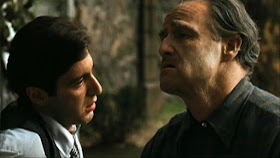In the last few years, Disney has had moderate success in adapting their classic animated films into live-action; from CINDERELLA (2015), THE JUNGLE BOOK (2016), and BEAUTY AND THE BEAST (2017)…among others. Their 1941 DUMBO is probably the most difficult to bring into live-action, a task that strange-and-unusual director Tim Burton seems well-suited for.
Max Medici (Danny DeVito), the owner and ringmaster of a struggling circus, enlists Holt Farrier (Colin Farrell), and his two children (Nico Parker and Finley Hobbins), to care for a newborn elephant whose oversized ears make him a laughing stock. Holt’s children discover that the elephant, named Dumbo, can fly, which draws the attention of tycoon V.A. Vandevere (Michael Keaton) and his trapeze artist girl Colette (Eva Green), who makes an offer to Max to buy out his circus and make them stars in his own amusement park.
The original DUMBO is the trickiest to being into live-action for two reasons. First, the film is only 64 minutes long, which makes it the shortest of Disney’s live-action features. And second, the notion of a flying elephant is a tough sell in a live-action setting, in which realism is expected despite any elements of fantasy. Tim Burton, who already has two remakes of children’s stories under his belt, beefs up the film by making it character-heavy, with all of them having a card to play in the game. Max is trying to save his circus, Holt is back from the war with an injury which makes it impossible to take up his old job as a cowboy, the kids just want to reunite Dumbo with his mother, while Vandevere just wants to get rich. Everything they want relies on poor Dumbo, who is struggling to learn to fly while being heartbroken after being torn from his mom.
With all these characters and their stories, Dumbo himself doesn’t get lost, but where DUMBO goes splat is that the many humans aren’t sketched out past further than page one. Everyone is thinly drawn with a few lines to express where they’re coming from, and then its on to the action. It’s hard to care about anyone or what they want.
Burton has put together a film that is a hybrid of realism and fantasy, but the tone is all over the place. One second its drama, the next action, the next child-like wonder and comedy. The transitions do not work very well, and with characters so weak its easy to see where things are going.
But where DUMBO falls in the telling, it soars in the visuals. Dumbo himself is wonderfully realized and has more personality than any human character. Burton shows us the elephant’s perspective in ways that are very effective, and the closeups of his eyes gives him a soul. The flying sequences are a thrill, with the first flight he takes worthy of applause. The circus itself looks amazing and is a lovely throwback to the glory days of big-top productions. DUMBO also has several clever winks and nods to the animated film, and plot points which seem silly in the cartoon are given new, realistic versions that work very well. Danny Elfman’s score is the same-old, same-old stuff he does for every Tim Burton movie.
Acting is atrocious. Danny DeVito is okay, but his character is all over the place in personality and he doesn’t seem to know what to do with it. The kids are awful and feel like they’re reading lines at a 3rdgrade play. Michael Keaton turns in the worst performance of his career; acting like a hammy cartoon with a side of cheese. It’s laughable in all the bad ways. Colin Farrell and Eva Green are the few that escape relatively unscathed, with Farrell doing a passable Kentucky twang and Green a sexy French accent.
The finale of course has the usual Tim Burton chaos of everyone running all over place with shit falling out of the sky and everything going haywire. In the end, which wraps up nice and tight, everyone gets their due, but it lacks the emotional punch that it was going for. DUMBO does have its moments; the flying elephant works on a believable level and functions as a character, but everything around him from clumsy editing to stock characters keeps this flight from really taking off.
BOTTOM LINE: Rent it



























